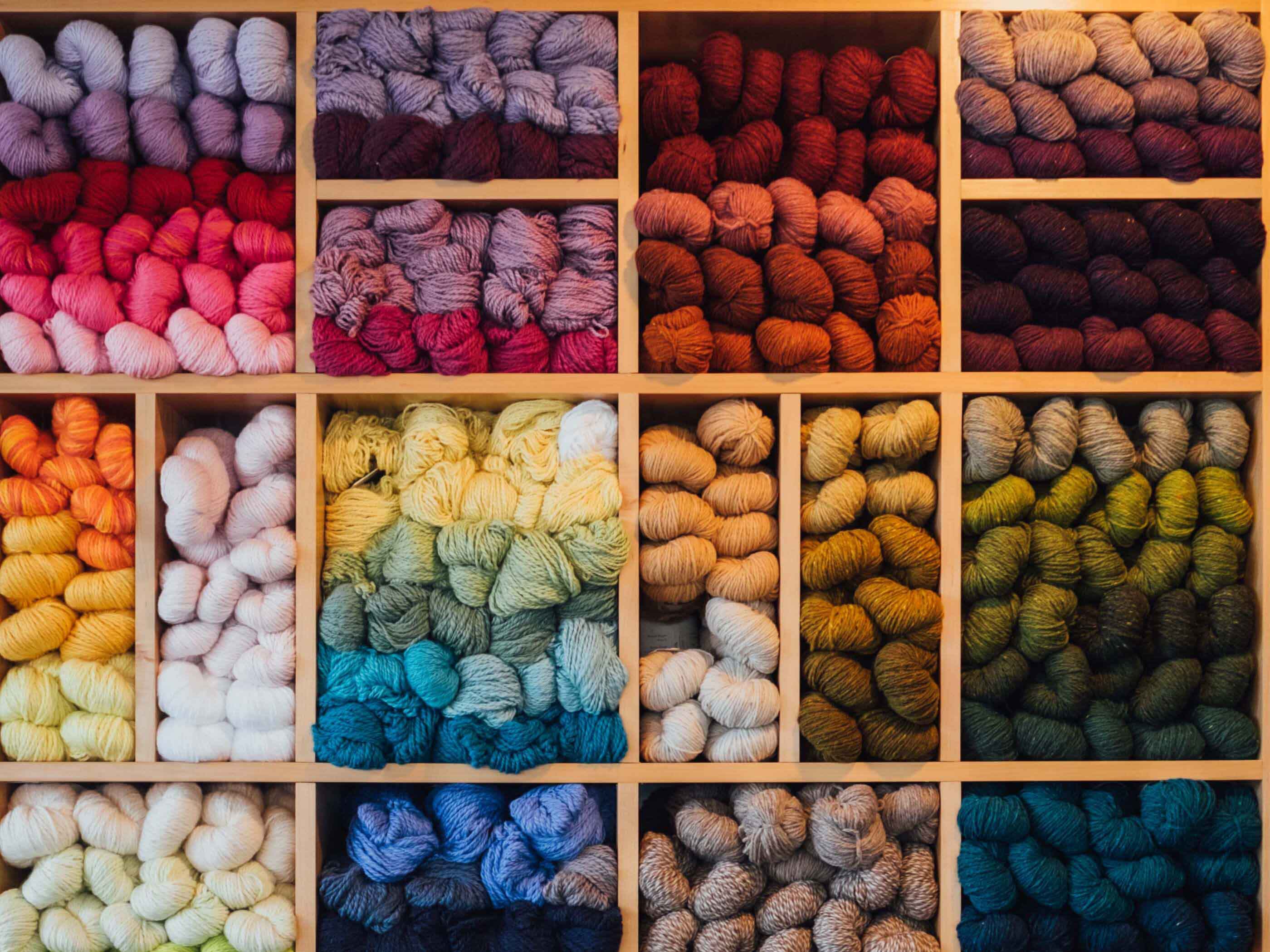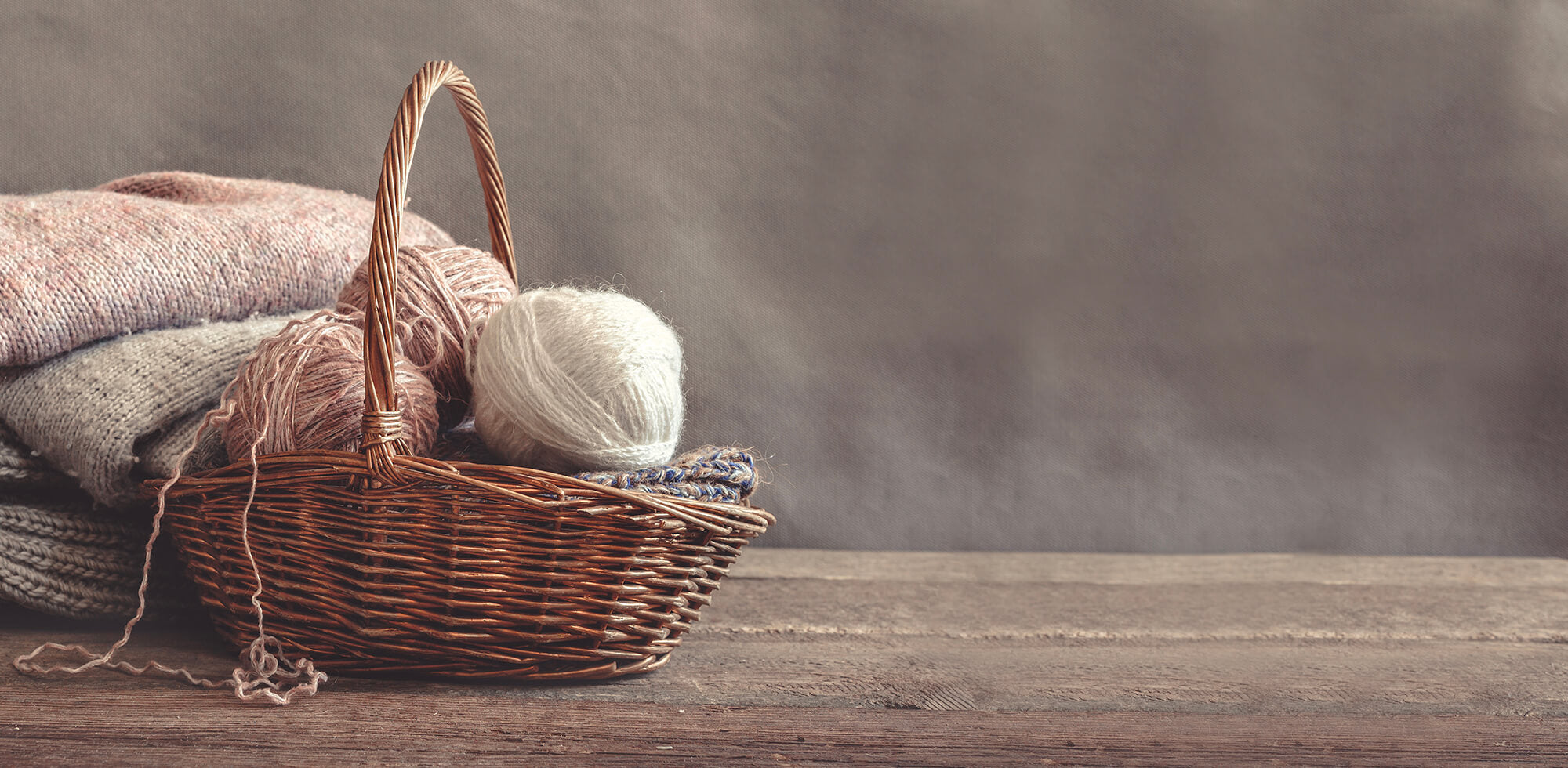By Claudia Ostrop
In our blog post Are Synthetic Fibres Really Necessary in Knitting Yarns? we explained our critical stance on this topic. In the following text, we would like to explain why we still use “synthetic fibres” - namely viscose - in some of our yarns.
Synthetic Fibres - Fully Synthetic or Semi-Synthetic
Synthetic fibres can be divided into two major categories: fully synthetic or semi-synthetic. Fully synthetic fibres are manufactured with a chemical process based on non-renewable raw materials like crude oil. Semi-synthetic fibres, on the other hand, are also manufactured with a chemical process, but on the basis of renewable raw materials.
What Is Viscose?
Viscose fibres are made from cellulose which is the building block of plant cell walls. Various types of wood and also bamboo serve as the basis for production.
With the help of chemicals such as caustic soda and sulfuric acid, wood shavings or bamboo chips are dissolved into a viscous solution. This solution is then forced through a spinneret machine and solidified to produce viscose filaments, which can then be spun into yarn. Viscose fibres are not only used for yarns and textiles, you can find them in tea bags and toiletries, and even in the paper that banknotes are made of!
 Properties of Viscose Fibres
Properties of Viscose Fibres
The viscose manufacturing process turns wood or bamboo into a semi-synthetic fibre. Its chemical composition is similar to that of natural cotton. It is very soft and pliable. Moisture is absorbed very well and just as easily released again: Viscose can absorb up to 400 % of its own weight in moisture without looking wet. Because it is breathable, it has a cooling effect. This makes the fibre ideal for use in active and workwear textiles. Compared to natural cotton, viscose is easier to care for because it is easier to wash, dries faster and wrinkles less.
Viscose has a delicate sheen, which allows colours to stand out more. Textiles and knitted items with a high percentage of viscose are somewhat reminiscent of silk. Incidentally, that was the goal behind the development of the viscose process: to find an inexpensive alternative to expensive silk. Viscose was also known as "artificial silk" for a long time.
Viskose: Pros & Cons
There are several arguments in favour of using viscose in yarns and textiles. Aside from the positive fibre qualities described above, viscose is always based on a renewable raw material and is, therefore, later biodegradable. In contrast to fully synthetic fibres, viscose doesn´t produce microplastics. As a rule, the use of pesticides for cellulose raw materials is extremely low. Being free from harmful substances also has a positive effect on the wearing quality: even people with very sensitive skin can wear it without a problem.
As far as the technical aspects of production goes, what speaks for viscose is that the fibre length and thickness can be completely adapted to the respective purpose during production. There are, however, a few negative aspects. Environmentally harmful chemicals are required to obtain the cellulose and later to produce the viscous solution which will be used to produce the fibre. Overall, the entire production process is very energy-intensive.

What Is “Better”, Viscose or Cotton?
So why not just use cotton instead of other natural fibres that require a chemical process to produce them?
To put it very simply - cotton also has disadvantages. It only grows in warm, dry countries, and its cultivation is associated with very high levels of water consumption. According to estimates by the WWF, up to 11,000 litres of water are used to produce 1 kilogram of cotton. That's about a pair of jeans and a T-shirt - or 20 small skeins of yarn. What is more, the high levels of water consumption are not due to the fact that the plants need so much water. Rather, the cause is that in countries where cotton is grown, irrigation is done by flooding. Much of the water evaporates on the way to the plant or seeps into damaged pipes.
And what about viscose?
For the production of the same amount of viscose, only about 5% of the amount of water needed to produce cotton is used.
Furthermore, genetically modified plants are common in conventional cotton cultivation; genetically modified plants grow in an estimated 80% of all cotton fields worldwide.
Finally, cotton is one of the plants with the greatest use of pesticides. According to the Munich Environment Institute, cotton is sprayed an average of 20 times with all kinds of agricultural toxins per season.
Organic cotton, on the other hand, does significantly better: The plants are not genetically modified, no chemical pesticides or fertilizers are used, and the water consumption is significantly lower. Due to crop rotation, fields used in organic agriculture have more organic material in the soil which can in turn store much more water. In addition, irrigation is done by collecting rainwater. Organic agriculture is based on practices that restore, maintain and enhance ecological harmony.

Our yarns Nepal, Puno / Puno Winikunka and Suave only contain cotton from certified organic cultivation.
Bamboo Viscose
Viscose fibres are mostly made from beech, pine, spruce, eucalyptus, annual fibre plants and very short cotton fibres - as well as from bamboo. Since we use bamboo viscose in our Forest and Cumbria yarns, we would like to take a closer look at this.
There are many advantages to using Bamboo as a raw material for viscose:
It is very climate-tolerant and can be grown on over 70 % of the land area. Bamboo is also extremely robust and does not need any pesticides. It grows incredibly quickly without having to use fertilizers. In fact, bamboo is one of the fastest growing renewable resources in the world. Since the plant's health is improved by cutting, bamboo can be re-harvested every three years without any harmful effects on the environment.
Bamboo contains antibacterial agents that are also retained by the viscose process. The fibres have tiny cavities that allow for particularly good water absorption and heat regulation. Furthermore, bamboo is especially nice for knitted items. Yarns made with bamboo are extremely soft, have a slight sheen and a very nice drape. Bamboo yarns feel more like they had been made with a fine wool rather than with a semi-synthetic fibre.
"New" Viscose Fibres: Lyocell, Modal & Co.
Although the viscose production process described above has been around for over 100 years, newer methods and types of fibres have been added by the industry in recent years.
Modal, for example, is a semi-synthetic fibre mainly made from beech wood. The technical production process does not differ significantly from that of "normal" viscose. Modal fibres are, however, much more stable than normal viscose fibres.
Lyocell ("Tencel") is also a fibre made from cellulose, but no toxic solvents are used to make the pulp. In addition, work is carried out in a completely closed production cycle, so that the environmental impact is likely to be significantly lower than with the classic viscose process. However, here too, environmental friendliness depends on the origin of the wood used.
Conclusion
When it comes to choosing between viscose and cotton, it can be difficult to tell which one will suit a project better. Being aware of the pros and cons of each will certainly help you in your decision.





1 comment
Sonia Marti
Me ha previsió muy interessante y esclarecedor este articulo. Com consumidora preocupada por el medio ambiente y con saber lo que me toca la piel creo que al comprar estos productos, deberíamos ser muy conscientes de todo, puesto que nos vestimos cada día.
Lo que no sabía, és que los productos con los cuales se tratan al algodón permanecen una vez tejido. Practicamente solo uso algodón o viscosa, los tejidos de plástico me dan mucha calor, pero ahora descubro que con el algodón tampoco estoy libre de sustancias nocivas para mi cuerpo.
Me ha previsió muy interessante y esclarecedor este articulo. Com consumidora preocupada por el medio ambiente y con saber lo que me toca la piel creo que al comprar estos productos, deberíamos ser muy conscientes de todo, puesto que nos vestimos cada día.
Lo que no sabía, és que los productos con los cuales se tratan al algodón permanecen una vez tejido. Practicamente solo uso algodón o viscosa, los tejidos de plástico me dan mucha calor, pero ahora descubro que con el algodón tampoco estoy libre de sustancias nocivas para mi cuerpo.